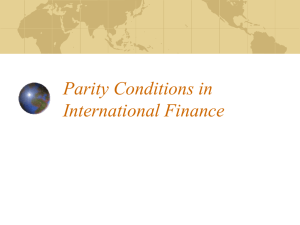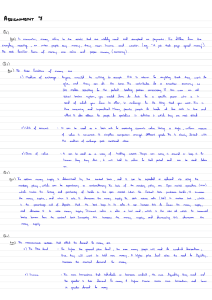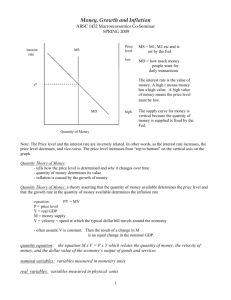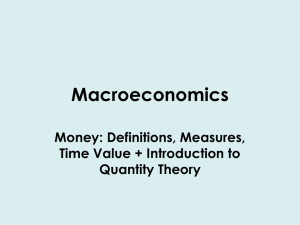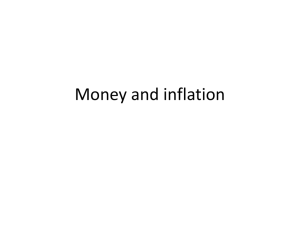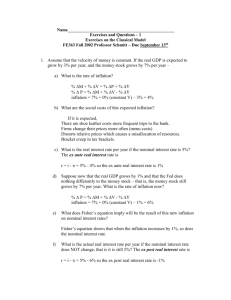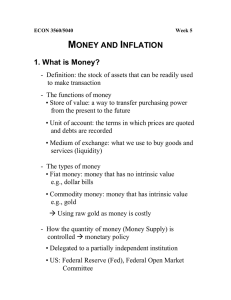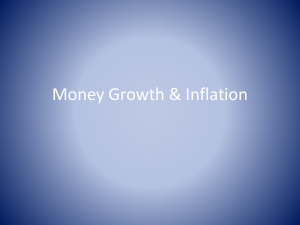Money Supply: Ch. 4
advertisement
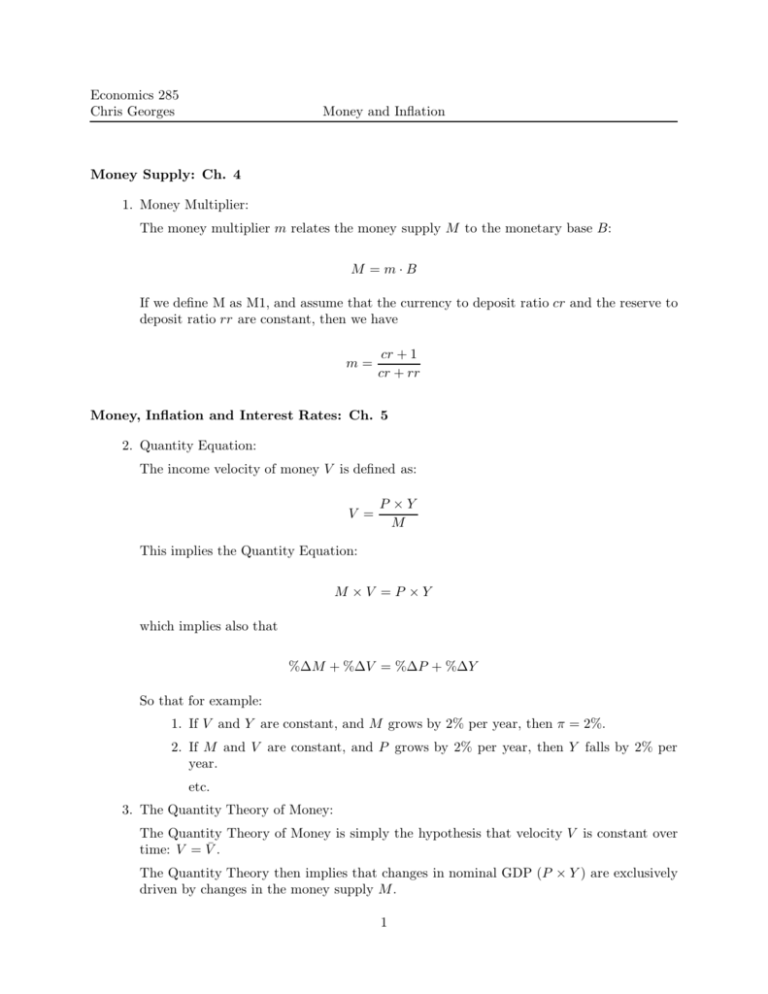
Economics 285 Chris Georges Money and Inflation Money Supply: Ch. 4 1. Money Multiplier: The money multiplier m relates the money supply M to the monetary base B: M =m·B If we define M as M1, and assume that the currency to deposit ratio cr and the reserve to deposit ratio rr are constant, then we have m= cr + 1 cr + rr Money, Inflation and Interest Rates: Ch. 5 2. Quantity Equation: The income velocity of money V is defined as: V = P ×Y M This implies the Quantity Equation: M ×V = P ×Y which implies also that %∆M + %∆V = %∆P + %∆Y So that for example: 1. If V and Y are constant, and M grows by 2% per year, then π = 2%. 2. If M and V are constant, and P grows by 2% per year, then Y falls by 2% per year. etc. 3. The Quantity Theory of Money: The Quantity Theory of Money is simply the hypothesis that velocity V is constant over time: V = V̄ . The Quantity Theory then implies that changes in nominal GDP (P × Y ) are exclusively driven by changes in the money supply M . 1 If we add the assumption of our long run model that Y = Ȳ as well, then inflation is purely monetary: π = %∆M . 4. The Fisher Equation and the Fisher Effect: The ex ante Real Interest Rate r is defined as: r = i − Eπ The Fisher Equation is a restatement of this definition: i = r + Eπ The Fisher Effect is the hypothesis that the ex ante real interest rate is determined by real factors (such as the balance between saving and investment in our long run model), so that the nominal interest rate moves one for one with the expected rate of inflation. Exchange Rates and Inflation: Ch. 6 5. Nominal Exchange Rate Appreciation Recall that a country’s real exchange rate ε (relative to another country) is defined as: ε = e · (P/P ∗ ) where e is the nominal exchange rate, P is the domestic price level, and P ∗ is the price level in the other country. This can be rewritten: e = ε · (P ∗ /P ) which also implies: %∆e = %∆ε + %∆P ∗ − %∆P = %∆ε + π ∗ − π This gives us another Fisher-Effect-like result. If the equilibrium real exchange rate is determined by real factors (as is the case in the long run open economy model in chapter 6), then the nominal exchange rate must appreciate or depreciate over time by the difference between the inflation rates in the two countries. 2
